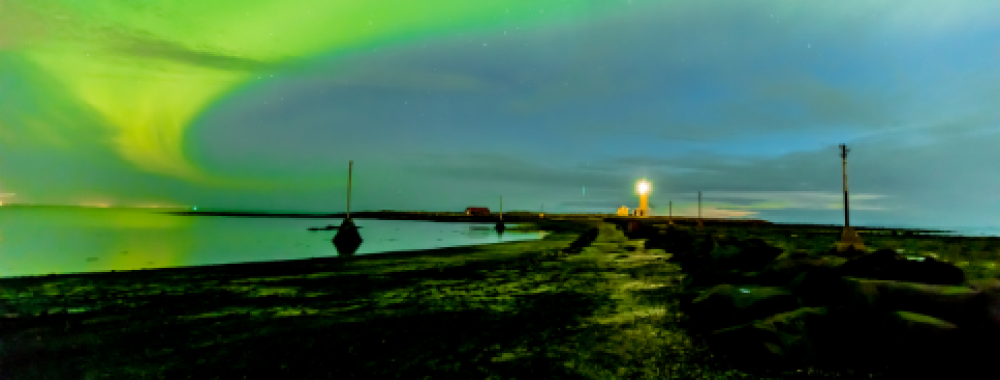- About Us
- Hotels
- Resorts
- Excursions
- Car Hire
-
Blog
- Food & Drink
- Things to do in Iceland
- Iceland Holidays
- Iceland Volcano Latest News
- People & Places in Iceland
- Climate, Geology & Seismic Activity in Iceland
- Travel & Hotels in Iceland
- Northern Lights in Iceland
- Reviews
- Icelandic Culture & History
- Landscape & Wildlife in Iceland
- Blue Lagoon and Hot Springs
- Corporate Incentive Group Trips to Iceland
- Iceland and COVID-19
- Geysir Geothermal Area Iceland
- Super Jeep Tours
- Films & TV Shot on Location in Iceland
- Contact Us
Found dancing in the skies above the land of fire and ice, the Northern Lights are one of the world's most spectacular natural wonders.
These dancing lights are at the top of many bucket lists around the world and bring in thousands of tourists to Iceland every year. Depending on the weather conditions, cloud cover, and your location, they can be hard to spot. Here's a little reminder of the top tips when visiting Iceland to see the Northern Lights:
- Visit between September and April.
- The night must be as dark as possible.
- There should be as little unnatural light as possible.
- There should be as little cloud cover as possible.
- There must be enough solar activity.
Luck is always a factor where nature is concerned, particularly when hunting the aurora borealis (The Northern Lights).
Here are the top 5 places to see the Northern Lights in Iceland.
1. Kirkjufell
A mountain framed by a waterfall and surrounded by lush greenway (or snow in winter), Kirkjufell already looks perfect without the Northern Lights- it is frequently dubbed 'the most photographed mountain in Iceland'. Kirkjufell makes you fall deeper in love with this varied country and provides a stunning back group for the light display to boot.
Located on the north coast of the Snaefellsness peninsula, just a two-hour drive from Reykjavik.
2. Reynisfjara Black Sand Beach
Near the southern town of Vik is Reynisfjara, known for its black sand beach, basalt columns and ocean stacks. It's one of the best places to see the Northern Lights in Iceland because it provides both a dramatic view and the soundtrack of the waves while the night sky puts on its show. Legend has it that the basalt stacks were once trolls who tried to guide a ship to shore, and when daylight broke, they transformed into the sharp needles of rock you see now, forever stranded out at sea.
3. Jokulsarlon
Jokulsarlon is a glacial lagoon that should be on your Iceland bucket list. It just so happens that the utterly unique landscape also makes one of the best places to see the Northern Lights in Iceland. Located in the Southeast, bordering Vatnjokull national Park, the crystal-clear ice boulders on the black sand beach pick up the red and green glow of the aurora borealis, creating a kaleidoscopic effect.
4. Pingvellir National Park
Iceland is a sparsely populated country, so you don't have to go far to get away from light pollution, Pingvellir (Thingvellir) National park is historically significant in the country: It was the site of Iceland's parliament between the 10th and 18th centuries and where the Silfra Drift (the meeting of the Eurasian and North American tectonic plates) is located. More importantly, it offers clear night skies necessary to see the Aurora.
5. Grotta Lighthouse
A birdwatching paradise by day, the nature reserve of Grotta is only a few kilometres from downtown Reykjavik. However, it feels as if you've driven much farther into the wilderness- it lies at the top of the Seltjarnarness peninsula, With its jagged coastline and black sands rinsed by the icy Atlantic, its a hugely popular attraction on its own right, And as it's away from the capital city lights you have a decent chance fo witnessing the Autota Borealis, as well.
Book your Northern Lights holiday with Iceland Holidays here
- View all our latest offers here
-
Reykjavik City Breaks
from £599.00 View offers -
Fly Drive Holidays Iceland
from £679.00 View offers -
Guided Iceland Bus Tours
from £649.00 View offers -
Luxury Iceland Breaks
from £849.00 View offers -
Northern Lights Holidays Iceland
from £599.00 View offers -
Top 10 Iceland Holidays
from £699.00 View offers -
North Iceland Holidays
from £999.00 View offers -
Group Travel & Solar Eclipse Iceland 2026
from £599.00 View offers
Call us on +44 (0) 1773 850222

Thank you so much Gareth for organising such a lovely holiday for us! We gave a basic outline of what we wanted from our holiday and Gareth organised everything. Everything ran very smoothly and what an amazing experience. Thank you for all your suggestions, so glad we took them on
We are here to reassure you that you can trust our team with your Iceland holiday plans, knowing that all bookings with us are ATOL protected











